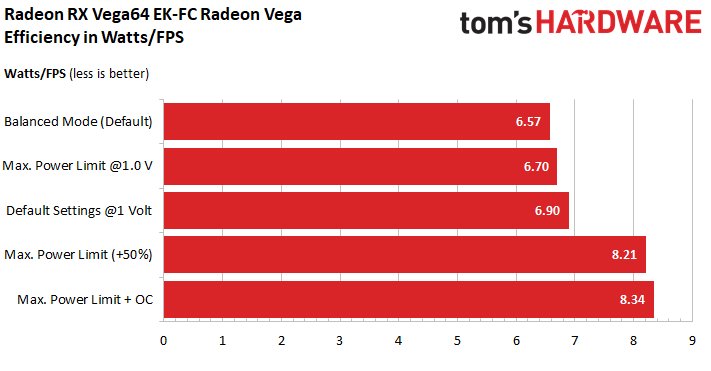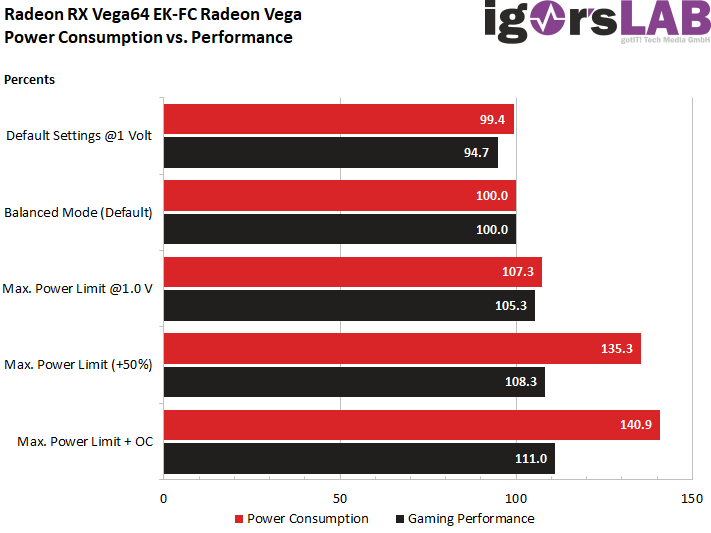Does subvolting bring more efficiency?
This can be answered very clearly with no and yes. No, as long as you don't raise the power limit to the maximum and yes, if you do. Then (and only then) you can get telemetry to see the voltage as a limiting factor and optimally adjust the resulting clock to the actual graphics load. This is hardly higher than the original Balanced Mode. However, we also see how the manual lowering of the voltage to 1.0 volts without increasing the power limit at the same time worsens the current account.

We did these surveys with only one game, but we took what produced a constant and reproducible load over the entire 30-minute period. Plausibility tests with Doom have shown that while the clock rates are higher and the power consumption lower, the core message remains absolutely the same if you compare the whole thing better in percentage terms. Then the numbers, no matter which game is used, hardly deviate from each other:

This time we can also see very clearly from the gaming performance, which we have already proven several times in the past pages: Undervoltages without raising the power limit is worthless and counterproductive.
Summary and conclusion
You can operate an RX Vega 10 more efficiently than the factory manufacturer has in its modes – that's fine. Due to the peculiarities of the AVFS, however, a manual voltage intervention only makes a positive impression if one also loosens the shackles of the power limit and thus brings the telemetry back into balance to some extent. In that case, the voltage reduction becomes only the same limiting factor among many, as it is, for example, temperatures are also. Where the limits for their own card lie, everyone has to test for themselves, as it also depends heavily on the chip quality.
The big savings sensation has not been achieved, but with only 20 watts more, which corresponds to about 7 percent, you achieve 5 percent more power. This good scaling can no longer be achieved with the normal settings without voltage throttling, because then it is almost 41 percent more power consumption with only 11 percent more performance. So you have to overclock undervoltages in order to overclock as efficiently as possible. This, too, is an interesting finding that only applies to Vega 10.
It would be nice if AMD handled the temperatures a little more precisely and, above all, documented them. We can therefore only advise the hotspot temperatures with a suitable tool (e.g. GPU-Z), because what the Wattman returns can definitely not be right (at least in the low temperature range).
However, the EK-FC Radeon Vega refrigerated block used by EK Water Blocks not only deserves a bee for good cooling and problem-free assembly, but also gets the purchase tip for all those who own a Radeon RX Vega64 or Vega56 and from the current refrigeration solutions are simply annoyed or disappointed.
Even if the backplate is a miserable lint and fingerprint catcher – it just looks good. From time to time, the microfibre cloth is allowed to do its job and you will surely easily suffer this small additional effort.
































Kommentieren